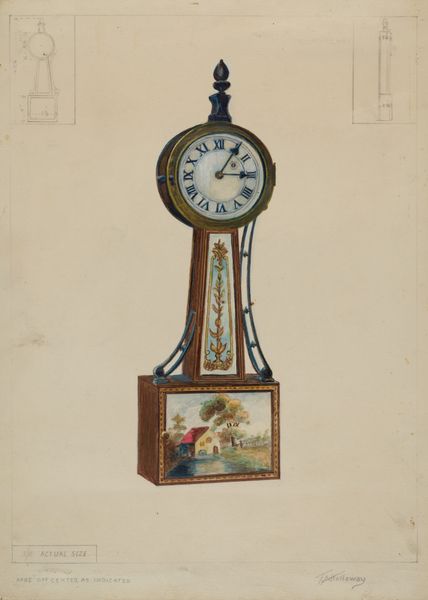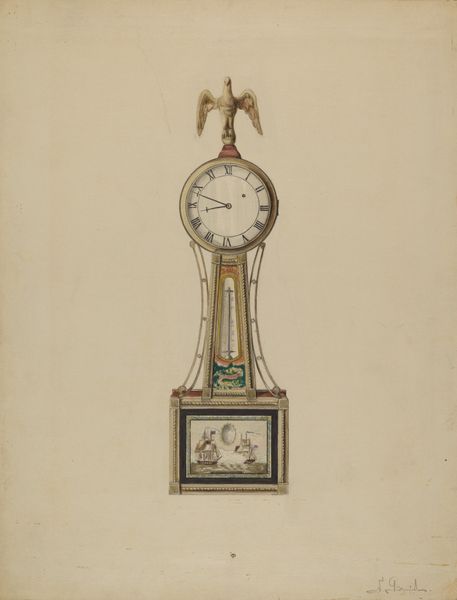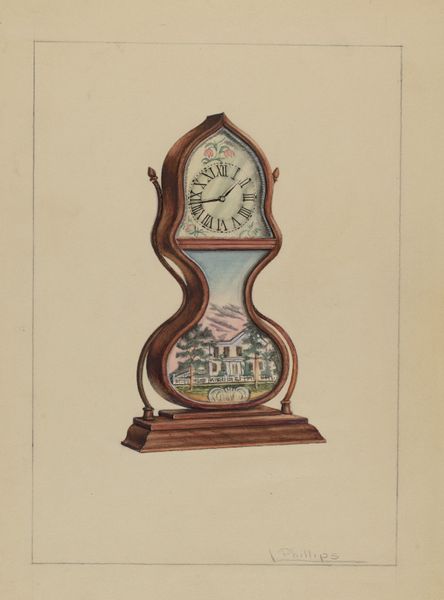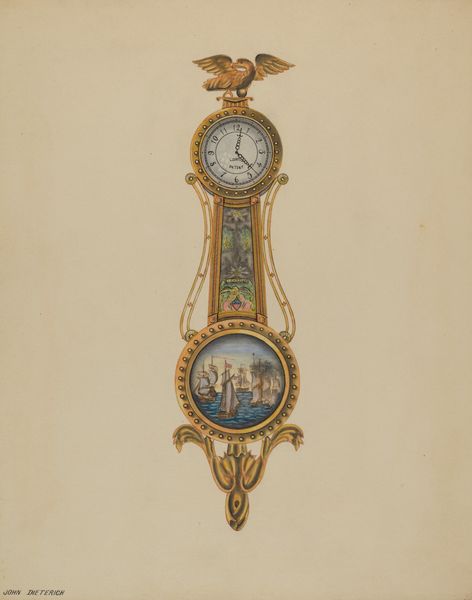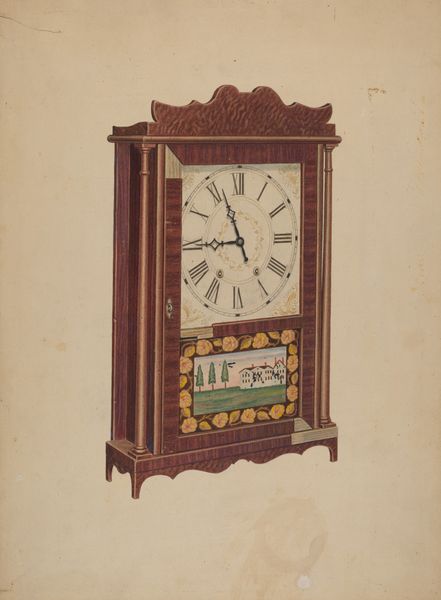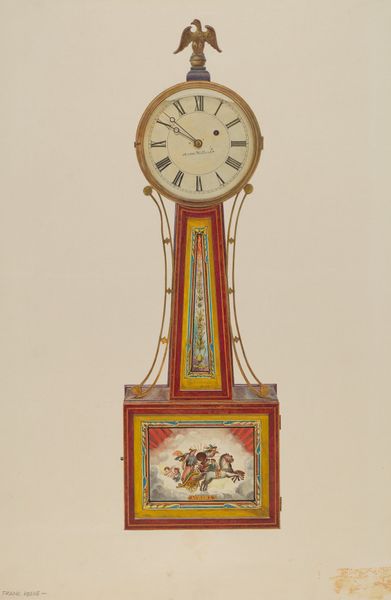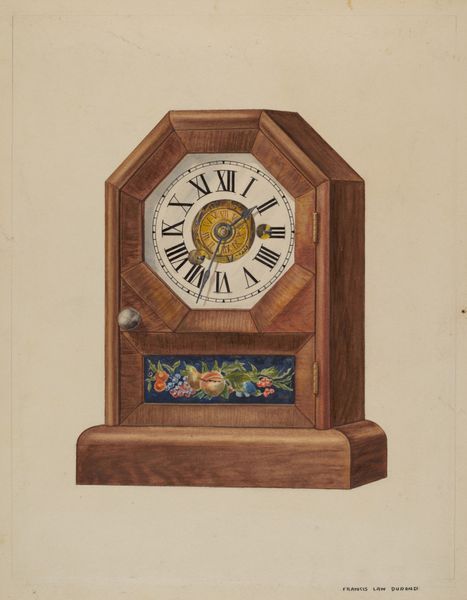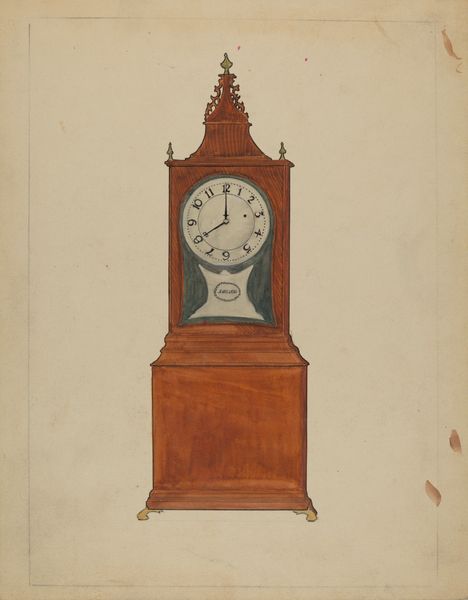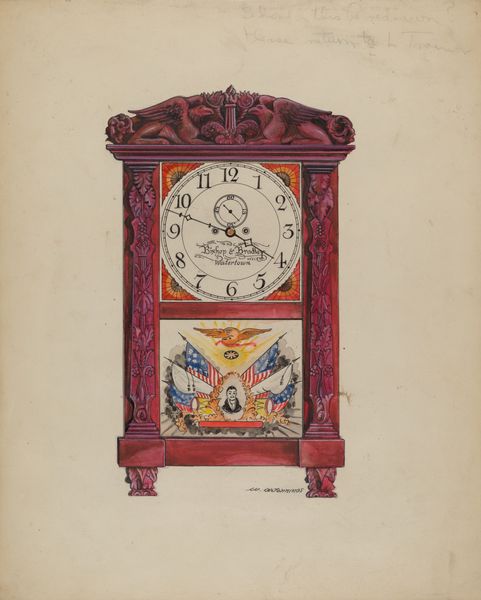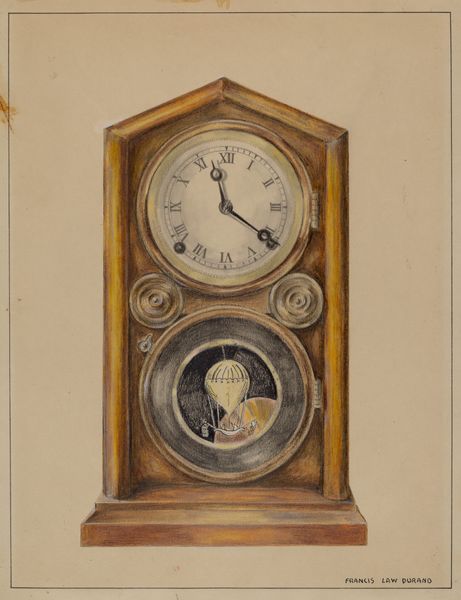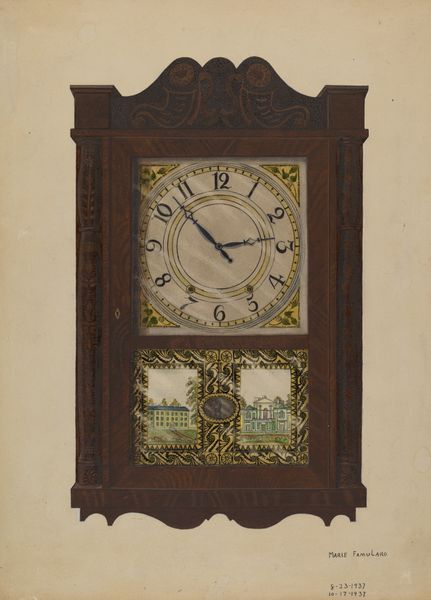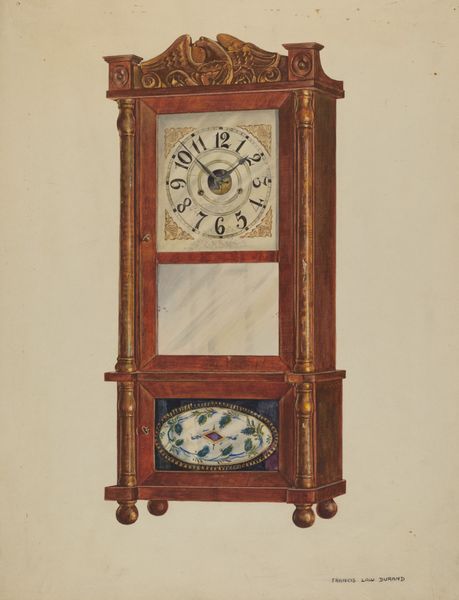
drawing, watercolor
#
drawing
#
watercolor
#
watercolour illustration
#
modernism
Dimensions: overall: 30.3 x 22.7 cm (11 15/16 x 8 15/16 in.) Original IAD Object: 34 1/2" x 10"wide
Copyright: National Gallery of Art: CC0 1.0
Curator: What a curious and whimsical image! The 'Banjo Clock,' a watercolor and drawing created around 1937 by Ulrich Fischer, immediately evokes a feeling of nostalgic fantasy, doesn’t it? The colors are soft, yet there's a sharp precision to the architectural rendering. Editor: It's certainly charming, though I read the precision somewhat differently. To me, the rigidity and hyper-detailed rendering come across more like longing—perhaps longing for an order or stability lost during the period between the wars, when this piece was made? I find something bittersweet in its careful rendering. Curator: Ah, I appreciate that interpretation. Looking closer, that precision speaks to a preservation of the past through symbolic motifs. Consider the sun chariot image emblazoned across its base - isn't that a bold nod to classical mythology and the timeless journey of the sun across the sky? It transcends a simple decoration, carrying symbolic heft of hope and eternal cycles. Editor: Agreed, that panel at the base certainly complicates things. It infuses the very modern aesthetic of the banjo clock with mythological themes of dominance. But even that myth, and that clock style, is bound in cultural history, as banjo clocks speak to wealth and power in a specific era, and those mythological references carry historical implications around gender and who holds that power, doesn’t it? Curator: Absolutely. It echoes a certain kind of elite aspiration from the inter-war years. Perhaps one could read the time, not only on its face, but within the social milieu it attempts to signify – that sense of upward movement or progress made possible, albeit inequitably, during this era? Editor: And isn’t timekeeping itself a deeply colonial concept? Regulating behavior through industrial time also speaks to the erasure of indigenous cultures who operate(d) from entirely different perspectives on time. Does this image reveal the way those inequities are literally baked into the concept of what we value and how we choose to visualize it? The imposition of one cultural marker, one time code, on top of all the others? Curator: I never thought of it that way, but I can’t unsee that potential context now. I had considered more straightforward interpretations of how we track the passage of time in our own consciousness and civilization’s grand story... how an era attempts to tell time to itself. But seeing this clock also as an engine of regulation really throws the painting into sharp relief. Editor: Yes, seeing through this particular lens reminds us that all objects—and images of objects—can tell stories about power and historical process if we listen closely. Curator: Ultimately, it underscores that symbolism is never simple. Instead, like a finely wrought clock mechanism, there are always multiple gears turning simultaneously.
Comments
No comments
Be the first to comment and join the conversation on the ultimate creative platform.
